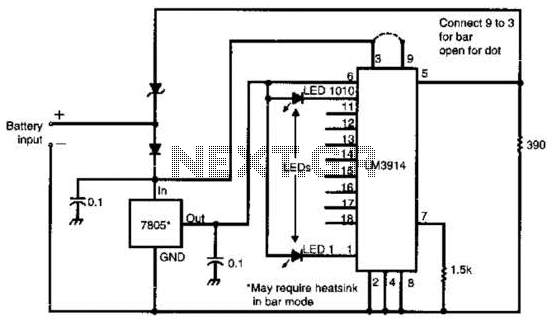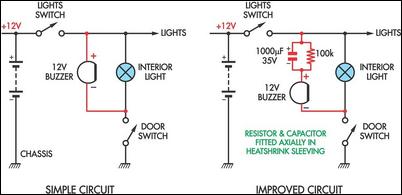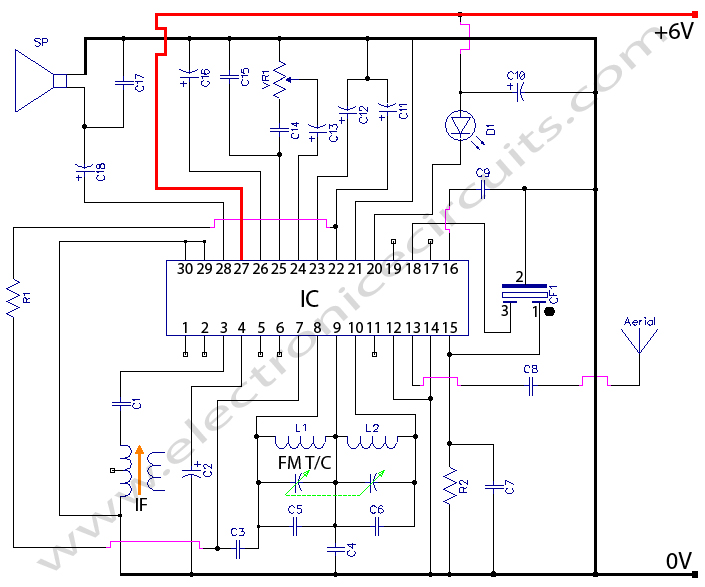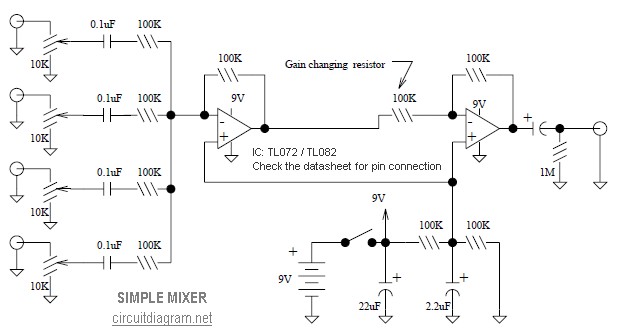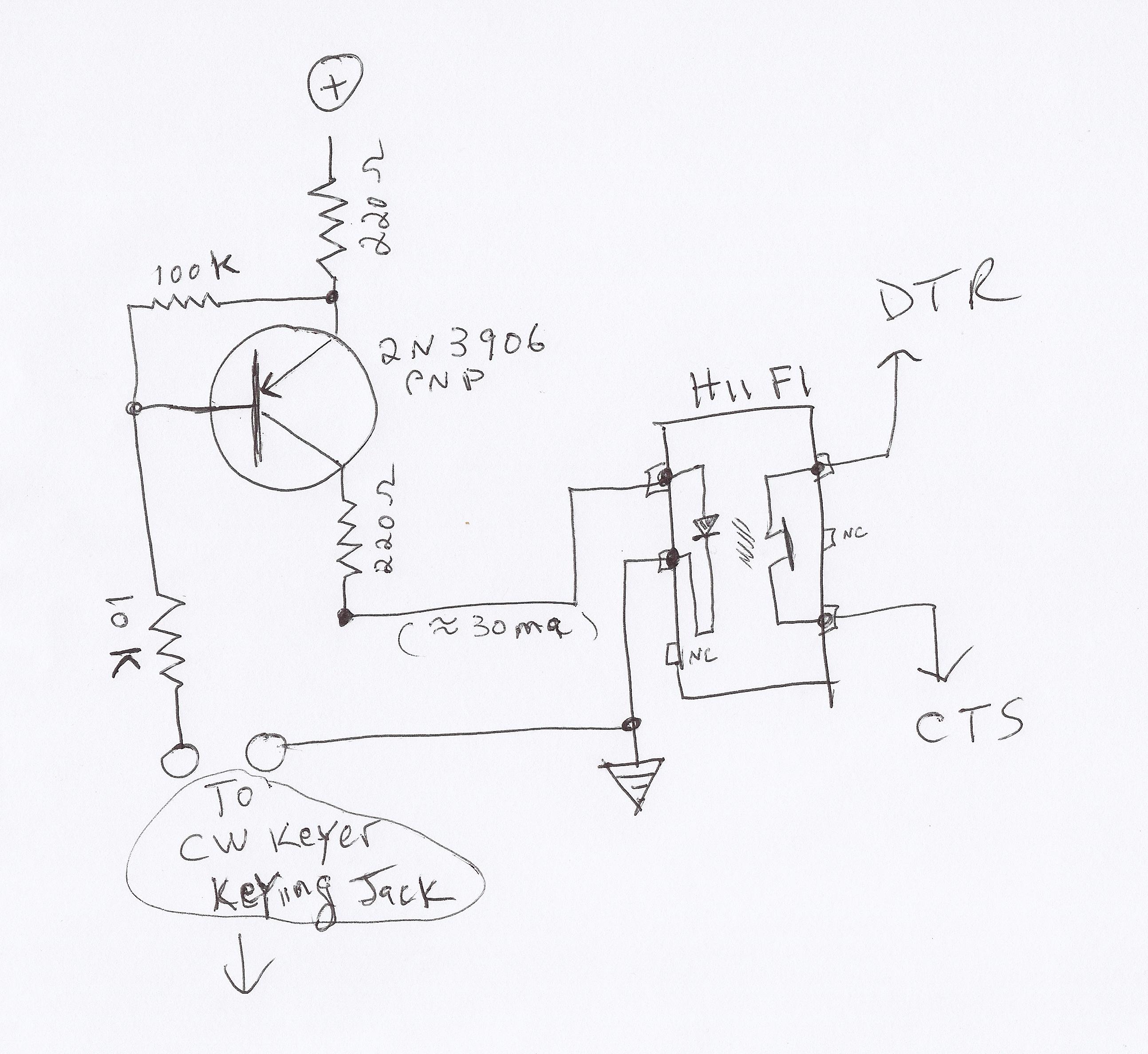
simple home made fm radio receiver
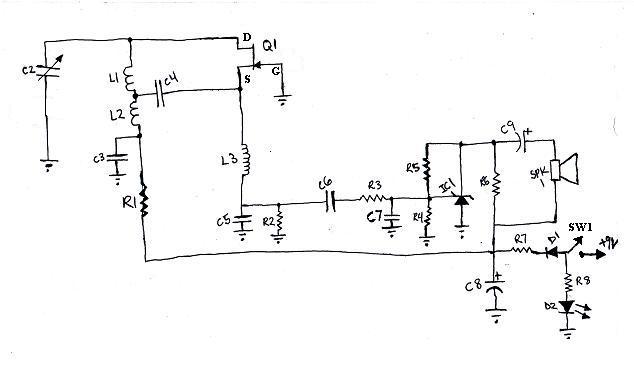
L1 and L2 were constructed by wrapping three tight loops side by side around a Sharpie marker. L2 was additionally created by wrapping approximately 8 inches of 35 AWG magnet wire around a ferrite core, ensuring that the windings were placed side by side and secured with a hot glue gun. Alternatively, any RF choke with a value between 20 to 30 microhenries can be used instead of making a custom inductor.
The circuit utilizes two inductors, L1 and L2, which serve critical roles in filtering and impedance matching within the RF circuitry. L1, formed by tightly wrapping the wire around a cylindrical object, achieves a specific inductance value that is essential for the desired performance characteristics. The choice of a Sharpie marker as a former provides a convenient and consistent diameter, yielding predictable inductance based on the number of turns and the wire gauge used.
L2, on the other hand, is constructed using a ferrite core, which enhances the magnetic coupling of the inductor and improves its efficiency at high frequencies. The selection of 35 AWG magnet wire is significant due to its thin diameter, allowing for more turns to be wound in a limited space, thus increasing the inductance without significantly increasing the physical size of the component. The use of hot glue ensures that the windings remain stable and do not shift during operation, which is crucial for maintaining the inductance value.
For applications where custom inductors are not feasible, utilizing commercially available RF chokes within the specified range of 20 to 30 microhenries is a practical alternative. These components are designed for high-frequency applications and are readily available, simplifying the design process while ensuring reliable performance. The overall design should take into consideration the specific requirements of the application, including operating frequency, current handling, and physical space constraints.L1 and L2 were made by wrapping three tight side by side loops around a sharpie marker, I also made L2 by wrapping about 8 inches of 35AWG magnet wire around a ferrite core, careful to make the windings side by side and glued it in place with a hot glue gun, you can use any 20-30 uH RF choke though, you don`t have to make your own. 🔗 External reference
The circuit utilizes two inductors, L1 and L2, which serve critical roles in filtering and impedance matching within the RF circuitry. L1, formed by tightly wrapping the wire around a cylindrical object, achieves a specific inductance value that is essential for the desired performance characteristics. The choice of a Sharpie marker as a former provides a convenient and consistent diameter, yielding predictable inductance based on the number of turns and the wire gauge used.
L2, on the other hand, is constructed using a ferrite core, which enhances the magnetic coupling of the inductor and improves its efficiency at high frequencies. The selection of 35 AWG magnet wire is significant due to its thin diameter, allowing for more turns to be wound in a limited space, thus increasing the inductance without significantly increasing the physical size of the component. The use of hot glue ensures that the windings remain stable and do not shift during operation, which is crucial for maintaining the inductance value.
For applications where custom inductors are not feasible, utilizing commercially available RF chokes within the specified range of 20 to 30 microhenries is a practical alternative. These components are designed for high-frequency applications and are readily available, simplifying the design process while ensuring reliable performance. The overall design should take into consideration the specific requirements of the application, including operating frequency, current handling, and physical space constraints.L1 and L2 were made by wrapping three tight side by side loops around a sharpie marker, I also made L2 by wrapping about 8 inches of 35AWG magnet wire around a ferrite core, careful to make the windings side by side and glued it in place with a hot glue gun, you can use any 20-30 uH RF choke though, you don`t have to make your own. 🔗 External reference
